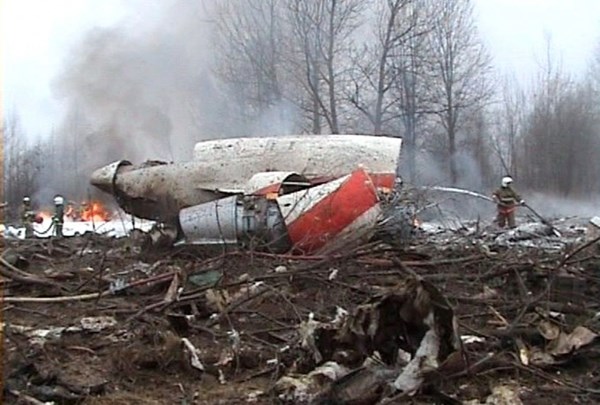Poland finds traces of explosives on Kaczynski crash victims
The Polish commission to investigate the Tu-154 airplane catastrophe over Smolensk, which killed then Polish President Lech Kaczyński, said that it has found traces of explosive substances on the body of one of the crash victims. This was announced in a communique from the Polish investigators, as cited by the Polish Press Agency.
According to the Polish investigators, explosive substances were also found “on many fragments” of the plane. However, no traces of it were found on the ground at the crash site.
In April 2018, the commission published a new technical report in which it claimed that the President’s plane was destroyed by an above ground explosion.
The President’s airplane crashed on April 10, 2010, resulting in 96 casualties: eight crew members and 88 passengers. In 2011, the Polish government reached the conclusion that the plane had crashed due to crew errors. The National Committee for the Investigation of Aviation Accidents believed that the plane crashed because it descended too low at a high speed, due to poor visibility, and crashed into a tree.
After the Law and Justice party came to power in 2015, Poland initiated a new investigation of the catastrophe. In 2017, the new Polish commission claimed that an explosion took place on board before the crash.
In August 2017, the commission said that traces of an explosion had been identified on the plane’s wing. The commission concluded that the wing was destroyed before the collision with the tree, and the “extensive damage to the left wing of the Tu-154 has traces of an explosion”.
Russia’s Investigative Committee (IC) responded with a statement that no signs of external influences or explosives had been found on the plane. The IC drew attention to the fact that, in 2011, Polish experts established that the cause of the crash was a collision with a birch tree.
